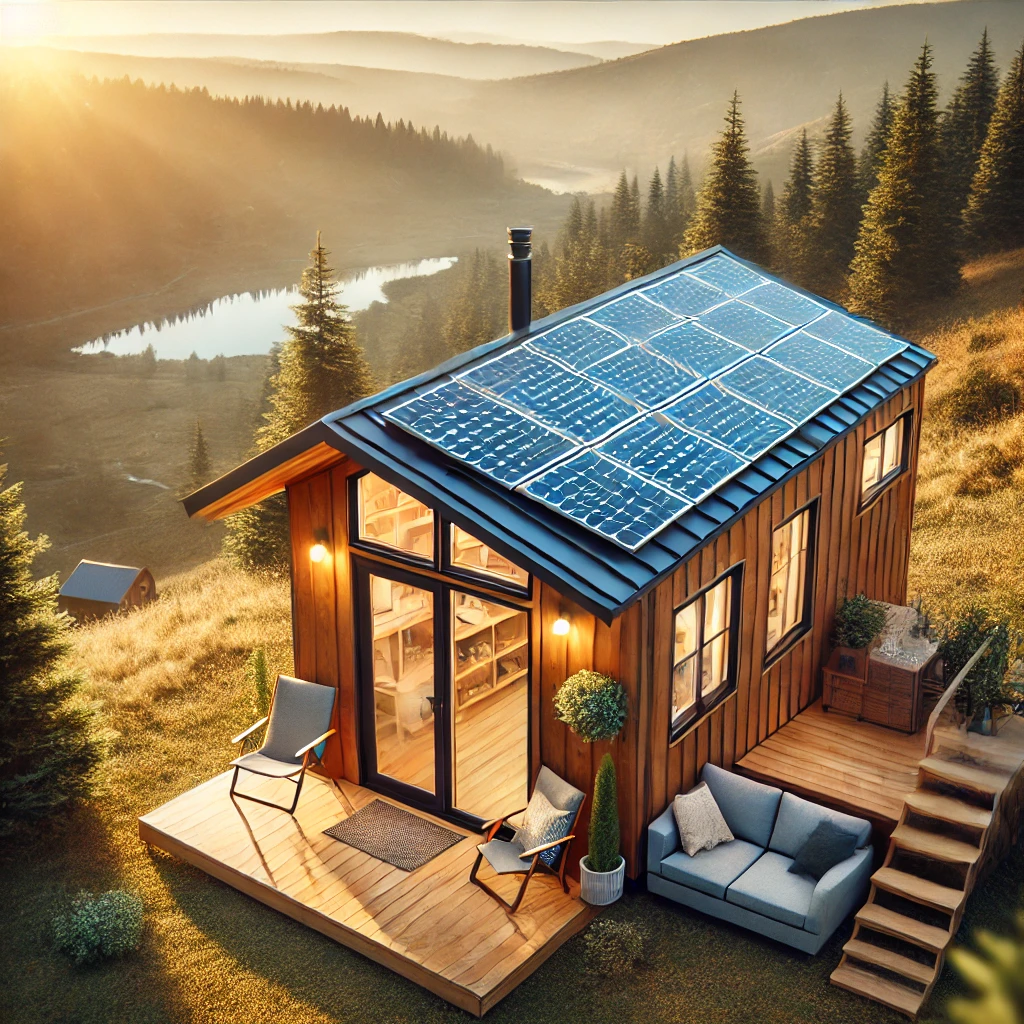Top 5 Game-Changing Tiny Home Technologies for 2025
The tiny home movement has grown from a niche trend into a mainstream lifestyle choice. As technology continues to evolve, tiny homes on wheels are becoming more efficient, sustainable, and convenient than ever before. In 2025, new technologies are set to transform the way we live in tiny spaces, making it easier to enjoy all the benefits of minimalistic, mobile living without sacrificing comfort or functionality.
From cutting-edge solar innovations to AI-powered home systems, these technologies are changing the game for tiny homeowners. If you’re thinking about building or upgrading a tiny home, here are the top 5 technologies to keep on your radar. Let’s dive into what’s possible for the future of tiny living!
1. Solar Innovations: Portable and Efficient Power for Off-Grid Living
The energy demands of tiny homes are typically lower than traditional houses, which makes solar power a popular choice. In 2025, solar technologies have advanced to offer more portable, efficient, and compact solutions specifically for tiny homes. Traditional solar panels have given way to flexible, lightweight versions that can be easily installed and even relocated if the home moves.
Why It’s a Game-Changer
New portable solar panel kits are designed to work in various lighting conditions and capture solar energy more effectively. This means even in areas with limited sunlight, tiny homeowners can harness enough energy to power their home’s essential systems.
Practical Tips:
Opt for Flexible Panels: These can be mounted on curved surfaces, which is ideal for unconventional tiny home designs.
Look for High-Efficiency Models: Many models in 2025 offer higher energy yields per square foot, making them ideal for small spaces.
Consider Battery Storage: Pairing solar panels with battery storage ensures power availability even on cloudy days.
2. Smart Water Recycling Systems: Sustainable Water Management
One of the greatest challenges for tiny home dwellers is water management. In 2025, smart water recycling systems are changing the game, enabling tiny homes to use water more efficiently while reducing waste. These systems recycle graywater from sinks and showers, filtering it for reuse in non-potable applications, like flushing toilets or watering plants.
Why It’s a Game-Changer
With many tiny homes located in areas with limited water resources, recycling systems reduce water consumption significantly. Advanced systems even allow for remote monitoring via smartphone apps, so homeowners can track water usage and system performance easily.
Practical Tips:
Choose a System with Multiple Filtration Levels: These provide cleaner, reusable water and reduce maintenance frequency.
Consider Pairing with a Rainwater Collection System: Collecting rainwater complements recycling systems, especially in areas where water access is limited.
Check Local Regulations: Some areas have specific guidelines for graywater use, so ensure your system complies.
3. AI-Driven Climate Control: Efficient Heating and Cooling
Tiny homes face unique climate control challenges due to their compact space, making it essential to regulate temperature efficiently. In 2025, AI-powered climate control systems have been developed to keep tiny homes comfortable year-round. These systems use sensors to monitor the home’s interior conditions, adjusting heating or cooling automatically to save energy and optimize comfort.
Why It’s a Game-Changer
AI-driven climate systems learn homeowners’ preferences and adjust based on real-time weather data, allowing tiny homes to maintain ideal conditions with minimal energy use. This reduces the overall carbon footprint of tiny homes and improves the quality of life for those who live in them.
Practical Tips:
Integrate with Solar Power: AI climate systems paired with solar power maximize energy efficiency.
Opt for Multi-Zone Control: This is helpful in larger tiny homes or those with lofts, allowing different areas to be maintained at optimal temperatures.
Monitor via App: Many systems come with smartphone apps that provide insights into energy usage and allow manual adjustments from anywhere.
4. Modular Storage Solutions: High-Tech Space Savers
Maximizing storage is a cornerstone of tiny home design, and in 2025, modular storage solutions are smarter and more efficient than ever. Advanced modular storage units are now integrated with motorized components and smart sensors, allowing cabinets, drawers, and shelves to expand or retract as needed, optimizing every inch of space.
Why It’s a Game-Changer
Tiny homes need to prioritize functionality without clutter, and motorized storage solutions make it easy to transform spaces. For example, a retractable dining table can appear when needed and fold back into a compact unit when not in use, freeing up valuable floor space.
Practical Tips:
Choose Multi-Purpose Units: Look for furniture pieces that can serve dual purposes, such as beds with storage drawers or desks that fold up.
Consider Motorized Units for Larger Items: Motorized shelves or hidden compartments are ideal for storing larger or rarely used items.
Think Vertical: Ceiling-mounted or wall-mounted storage solutions save floor space and create a modern, uncluttered aesthetic.
Choosing the Right Tiny Home Builder
Selecting a reputable builder is crucial to ensuring your tiny home meets local building codes and offers lasting quality. Nomadic Structures Tiny Homes is recognized for building high-quality, eco-friendly tiny homes that comply with Oregon’s regulations. Their designs are not only functional but also stylish and customizable, making them a perfect fit for homeowners looking to expand their property with an ADU. For more information or to start planning your tiny home, visit their contact page.
5. Advanced Security Systems: Peace of Mind in Small Spaces
Security is a priority for tiny homeowners, especially those who move frequently or park in isolated areas. In 2025, compact and efficient security systems have been developed to fit the needs of tiny homes on wheels. These systems include compact cameras, motion detectors, and remote access controls to keep tiny homes secure without taking up much space.
Why It’s a Game-Changer
Advanced tiny home security systems allow homeowners to monitor their property remotely, providing peace of mind whether parked in a bustling city or a secluded rural area. With customizable alerts and small-form hardware, these systems are an ideal fit for mobile living.
Practical Tips:
Opt for Systems with Mobile Monitoring: Remote access allows you to monitor security on the go.
Choose Discreet, Compact Devices: Tiny homes have limited space, so small and discreet cameras or sensors are ideal.
Consider Solar-Powered Security Options: Some security cameras are solar-powered, reducing dependence on the home’s energy system.
Conclusion
With the rapid advancement of technology, tiny homes on wheels are more functional and sustainable than ever. By incorporating these game-changing technologies—solar power systems, water recycling units, AI climate control, modular storage, and advanced security systems—you can elevate your tiny home experience, making it as efficient and comfortable as possible.
If you’re interested in building a custom tiny home with these cutting-edge features, contact Nomadic Structures today to start your journey to a modern, tech-savvy tiny home.
Ready to Start Your Build?
READ MORE LIKE THIS:
Author Profile: Jud Lang
Jud is a 37-year-old Oregon native with a passion for tiny homes, the great outdoors, and life’s simple pleasures. When he’s not exploring the Pacific Northwest with his dog, Rory, and his wife, Alyssa, he’s diving into all things tiny homes—designing, building, and sharing his insights to inspire others to live large in small spaces.










